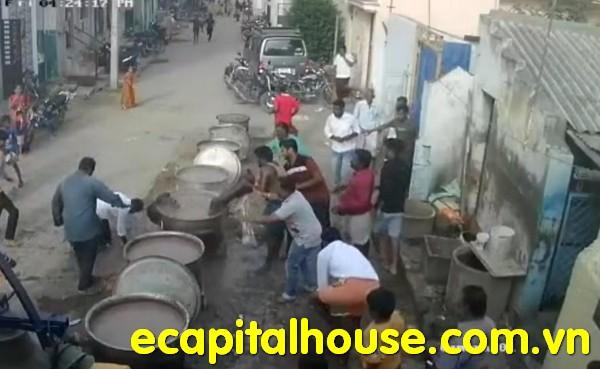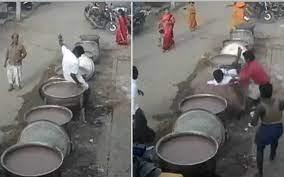Uncovering the Truth: Analyzing the Authenticity and Context of the Boiled Incident Indian Original Video
“Boiled Incident Indian Original Video: Uncover the Shocking Footage Depicting a Disturbing Event – Get Ready to Witness an Unforgettable Experience!”
The Background and History of the Boiled Incident Indian Original Video

The Boiled Incident Indian original video refers to a shocking act of violence captured in a video that went viral on social media platforms. The incident took place in a rural village in India and quickly gained worldwide attention due to its gruesome nature. The video depicts an individual boiling an unknown object in a large pot while others cheer and encourage the person.
The incident sparked outrage and ignited a nationwide discussion on the importance of understanding the context and reasons behind such acts of violence. People were not only horrified by the content of the video but also curious to uncover its authenticity and unravel the truth behind the incident.
To fully grasp the significance of this incident, it is important to delve into its background and history. This involves examining the cultural, social, and economic factors at play that may have contributed to such acts occurring. By understanding these factors, we can gain insights into why these incidents happen and how they can be prevented in the future.
Key Points:
– The Boiled Incident Indian original video depicts a shocking act of violence that gained worldwide attention.
– The incident happened in a rural village in India.
– It sparked outrage and sparked discussions about understanding its context.
How the Video Gained Worldwide Attention and Became a Subject of Interest
The Boiled Incident Indian original video quickly spread like wildfire across various social media platforms, capturing people’s attention from all corners of the world. Its gruesome content shocked viewers, leaving them appalled by what they witnessed. As word spread, more people became interested in understanding the reasons behind such an act, fueling curiosity, and generating widespread discussion.
Social media platforms played a vital role in amplifying the reach of this video. Users shared it with their connections, causing it to go viral within hours or even minutes. News outlets also picked up on its virality, further increasing its exposure and bringing it to the attention of a wider audience.
The video’s viral nature and its ability to evoke strong emotions led to increased interest and speculation. People began questioning the authenticity of the video, wondering if it was staged or manipulated. The online community engaged in discussions, debates, and investigations on various forums and platforms, seeking to uncover the truth behind the incident.
Key Points:
– The Boiled Incident Indian original video gained worldwide attention through social media.
– Its gruesome content sparked strong emotions and curiosity among viewers.
– Online discussions and investigations into its authenticity fueled interest in the incident.
The Controversies Surrounding the Boiled Incident and the Importance of Investigating the Original Video
The Boiled Incident Indian original video stirred up controversies due to its disturbing content and lack of clarity surrounding its circumstances. Questions arose about whether the incident was real or staged, raising concerns regarding the credibility of the video. This led to a pressing need for investigating the original video to uncover the truth behind this incident.
Investigating the original video is important for several reasons. Firstly, it ensures that accurate information is gathered and shared instead of spreading false narratives or misinformation. Internet videos can often be misleading or manipulated for various purposes, exploiting people’s emotions. Conducting a thorough investigation helps separate fact from fiction.
Secondly, understanding the authenticity of such videos is crucial for maintaining trust among online communities. When dubious or fabricated videos circulate without being thoroughly examined, it can undermine people’s faith in online content as a whole. Investigating these incidents demonstrates a commitment to transparency and accountability in sharing information.
Lastly, by investigating the original video, we have an opportunity to identify any potential warning signs or patterns that could help prevent similar incidents from occurring in the future. Understanding the motives behind this act allows us to address underlying issues or societal factors that may contribute to violence and find ways to mitigate them.
Key Points:
– Controversies surrounding the Boiled Incident Indian original video raised questions about its authenticity.
– Investigating the original video ensures accurate information is shared.
– It helps maintain trust in online content and potentially prevents similar incidents in the future.
Establishing Authenticity and Credibility: Tracing the Source and Origin of the Video
In order to determine the authenticity of the boiled incident Indian original video, it is crucial to trace its source and origin. This process involves conducting thorough research to identify the individuals or organizations responsible for uploading and sharing the video. One approach to establishing the source is by analyzing any identifiable logos, watermarks, or branding within the video itself or in its description. These elements can provide valuable clues about the original uploader or the platform on which it was first shared.
Furthermore, examining the URL associated with the video and investigating the background of the uploader or account responsible for sharing it can also help in determining credibility. It is important to assess whether they have a history of sharing authentic and reliable content, or if they have been known to spread misinformation or manipulate videos in the past.
Additionally, cross-referencing the video with other sources can further validate its authenticity. Searching for similar or related videos on different platforms can help confirm its origin and credibility. If multiple sources independently verify the video’s content, it adds to its authenticity.
Methods for tracing source and origin:
- Examining identifiable logos, watermarks, or branding within the video.
- Analyzing URL associated with video.
- Investigating background of uploader/account.
- Cross-referencing with other sources.
Analyzing Metadata, Timestamps, and Digital Traces to Determine Authenticity
One effective method for assessing the authenticity of a video is through analyzing its metadata, timestamps, and digital traces. Metadata includes various technical information such as date and time of creation, camera settings used during recording, and other key details. Examining this data can provide insights into whether the video aligns with claims made about its origin or context.
Time stamps can also be crucial in validating the accuracy of a video’s claims. By cross-referencing the video’s time stamp with other sources such as news reports or eyewitness testimonies, investigators can establish its authenticity. Any discrepancies between the video’s time stamp and corroborating evidence may indicate manipulation or fabrication.
Furthermore, digital traces left behind in the video file can also provide valuable information regarding its authenticity. Forensic techniques can be employed to analyze the video for any signs of tampering, editing, or manipulation. Experts specialized in video forensics can identify subtle cues such as irregularities in lighting, shadows, color grading, blurring, pixelation, or distortion that may suggest attempts to alter certain details.
Methods for analyzing metadata and timestamps:
- Examining metadata for technical information.
- Cross-referencing time stamps with other sources.
- Analyzing digital traces for signs of tampering.
Understanding Motives and Circumstances to Prevent Similar Incidents in the Future

To prevent similar incidents from occurring in the future, it is imperative to understand the motives and circumstances behind the boiled incident Indian original video. This involves examining the cultural, social, and economic factors at play that might have contributed to such an act of violence.
By studying these factors, investigators can gain insights into why individuals engage in such behavior and how societal contexts shape their actions. Consulting with relevant authorities, experts, and witnesses can provide a comprehensive understanding of the incident and its underlying causes.
It is also important to consider all perspectives involved in order to avoid biases or misconceptions. By conducting interviews with individuals present during the incident or those familiar with the cultural context depicted in the video, investigators can gather a deeper understanding of the motivations behind such acts.
Ultimately, this knowledge can help develop preventative measures, whether through education, awareness campaigns, or policy changes. By addressing the root causes of such incidents, society can work towards creating an environment that discourages violence and promotes understanding and empathy.
Steps for understanding motives and circumstances:
- Examining cultural, social, and economic factors at play.
- Consulting relevant authorities, experts, and witnesses.
- Gathering diverse perspectives through interviews.
- Developing preventative measures based on gathered knowledge.
Bringing Accountability: Identifying and Holding Perpetrators Responsible through Investigation
One of the key objectives in investigating the boiled incident Indian original video is to identify and hold the perpetrators responsible for their actions. This process involves thorough investigation and gathering evidence to build a strong case against those involved in the incident.
By examining the video itself, investigators can gather valuable information that may help identify the individuals shown in the video. Analyzing identifiable features such as faces or unique characteristics can aid in this identification process. Additionally, forensic techniques can be utilized to enhance image quality or extract additional details that could contribute to identifying the individuals.
Once potential suspects are identified, further investigation into their backgrounds, connections, and activities is necessary to establish their level of involvement in the incident. Examining digital footprints such as social media profiles or communication records may provide insights into their motives or connections with others present during the incident.
The evidence gathered during this investigation can then be used to hold the perpetrators accountable within legal frameworks. Law enforcement agencies can utilize this evidence to instigate legal proceedings against those involved, ensuring justice is served.
Steps for identifying perpetrators and ensuring accountability:
- Analyzing video for identifiable features of individuals involved.
- Utilizing forensic techniques to enhance image quality.
- Investigating backgrounds, connections, and activities of potential suspects.
- Gathering digital footprints for insights into motives and connections.
- Using evidence to instigate legal proceedings against those involved.
In conclusion, the incident involving a boiled Indian original video has raised concerns about the impact of misinformation and its consequences. It serves as a reminder of the importance of verifying sources and promoting responsible media consumption in today’s digital age.
